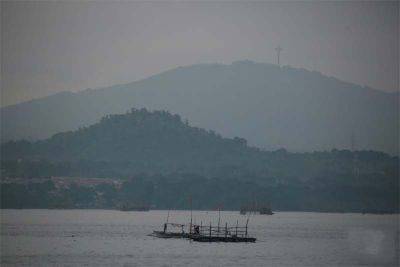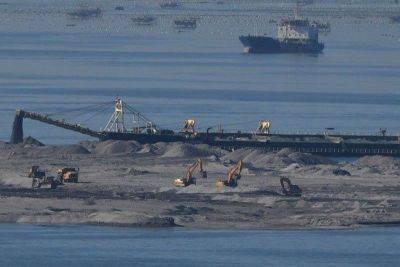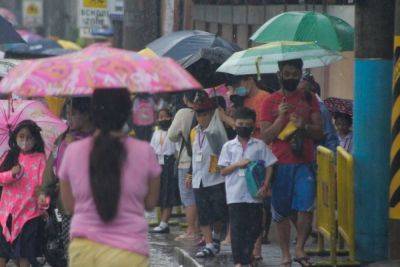Smog blankets Metro Manila, nearby provinces
MANILA, Philippines — Pollution-related smog smothered Metro Manila residents yesterday, leading to some local government units suspending classes due to poor air quality and hazy visibility, while provinces surrounding Taal Volcano experienced volcanic smog.
Data from the Department of Environment and Natural Resources (DENR) showed air quality in some parts of Metro Manila was deemed “acutely unhealthy” for residents.
The DENR said that air quality index (AQI), which monitors six criteria pollutants to determine how clean or polluted the air is, reached as high as 217 points in Parañaque City, 141 points in Pateros and 128 points in Makati – exceeding the guideline value of 35 micrograms per normal cubic meter (µg/Ncm).
The smog “may be primarily attributed to emissions of heavy vehicular traffic especially during rush hour,” the DENR-Environmental Management Bureau said.
Science Secretary Renato Solidum said what was over Metro Manila was not vog but just plain smog brought by thermal or temperature inversion.
He said that vog or volcanic smog was only present in the atmosphere over Batangas but not in Metro Manila.
“It’s not about Taal Volcano,” Solidum stressed.
“It’s not vog, it’s smog. Not related. But the smog in Metro Manila can affect the health. When outdoors, wear masks. When staying indoors, close the doors and windows,” he said during a briefing.
The Philippine Atmospheric, Geophysical and Astronomical Services Administration explained that meteorological conditions in parts of Luzon, which includes the National Capital Region, Calabarzon and some parts of Central Luzon, were conducive for haze or smog formation.
For its part, the Philippine Institute of Volcanology and Seismology (Phivolcs) noted that







